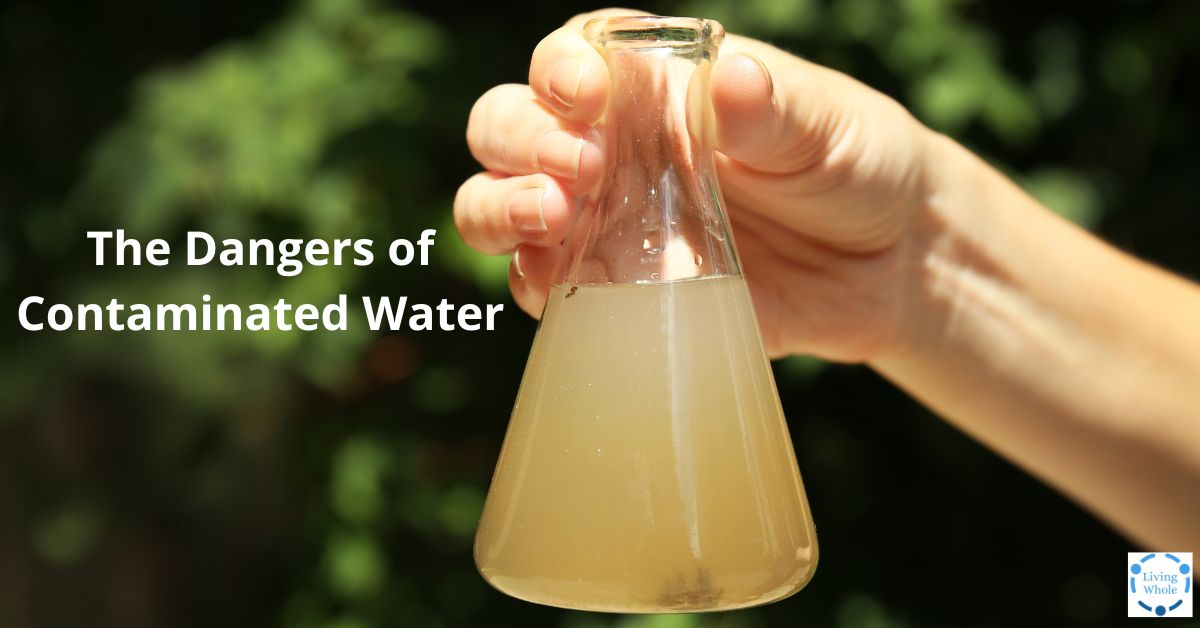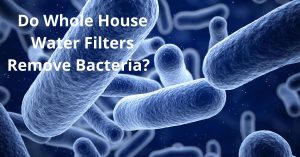As a parent and someone who now works in the water filtration industry, I understand how overwhelming it can be to navigate the world of water safety. When I first started researching water contamination, I was shocked by how many threats lurk in something as basic as our drinking water. It’s what led me to shift careers as I wanted to protect my family and help others do the same.
One of the scariest realisations was learning about PFAS (per- and polyfluoroalkyl substances), the so-called “forever chemicals” that have been making headlines in Australia. Earlier this year, the Sydney Morning Herald and other media outlets exposed how widespread PFAS contamination is in our water supplies, linked to firefighting foams and industrial pollution. This scandal was a wake-up call for many Australians, including me, about the invisible dangers in our taps.
But PFAS is just one concern. Water contamination comes in many forms, and understanding them is the first step to protecting your family.
What Are the 4 Types of Water Contamination?
Not all water contamination is the same. Here are the four main types to be aware of:
Chemical Contamination: Includes PFAS, pesticides, heavy metals (like lead and arsenic), chlorine, and industrial pollutants. It often comes from agricultural runoff, factory discharges, or old plumbing.
Biological Contamination: Bacteria (e.g., E. coli), viruses, parasites, and algae. It is common in untreated well water or after flooding when sewage mixes with water supplies.
Physical Contamination: Sediment, dirt, rust, or microplastics. It’s usually visible and often caused by ageing pipes or natural disasters.
Radiological Contamination: Rare but serious as radioactive elements like uranium or radon can seep into groundwater.
Each type requires different filtration methods, which is why choosing the best water filter for PFAS isn’t the same as picking one for bacteria or sediment.
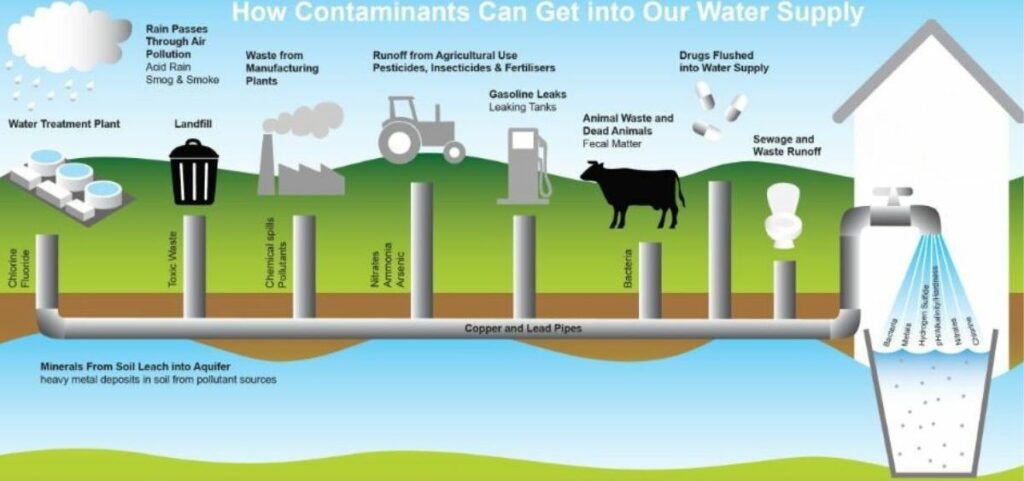
How to Tell If Water Is Contaminated?
Sometimes contamination is obvious – cloudy water, strange smells, or a metallic taste. But many dangerous pollutants are invisible. Here’s what to watch for:
– Unusual taste or odour (e.g., chlorine, sulphur, or a “chemical” smell).
– Discolouration (brown, yellow, or cloudy water).
– Unexplained illnesses (stomach bugs, skin rashes, or long-term health issues).
– Local advisories (check your water provider’s reports or news like the PFAS scandal coverage).
If you’re concerned, get your water tested. Many councils publish the test results, or you can use a certified lab – this is especially recommended when on well water.
Where Does Contaminated Water Come From?
Different water sources carry different risks:
– Tap Water: Generally treated, but old pipes can leach lead, and treatment doesn’t always remove PFAS or pesticides.
– Well Water: Vulnerable to agricultural runoff and bacteria if not properly maintained.
– Rainwater Tanks: Can collect pollutants from roofs or airborne contaminants.
– Bottled Water: Not always safer as some brands simply repackage tap water, and plastic bottles can leach chemicals and microplastics. This is why filtration is so important.
How to Choose the Right Water Filter
When I first started, I was overwhelmed by conflicting information. Now, after years in the industry, I know what works:
1. Reverse Osmosis Water Filter – The gold standard for removing PFAS, heavy metals, and chemicals. It forces water through a fine membrane, blocking almost all contaminants.
2. Whole House Water Filter – Protects every tap in your home, filtering out sediment, chlorine, PFAS, and some chemicals before water even reaches your shower or kitchen.
3. Activated Carbon Filters – Great for improving taste and removing some chemicals (but not all, look for NSF-certified filters specifically rated for PFAS).
At our company, we carefully select certified cartridges from reputable sources because not all filters are created equal. Many brands make bold claims but fail independent testing.
Reverse Osmosis Water Filter
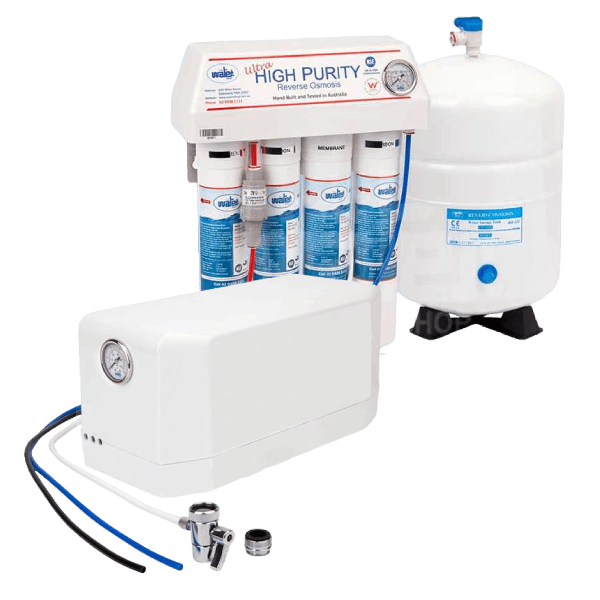
Whole House Water Filter
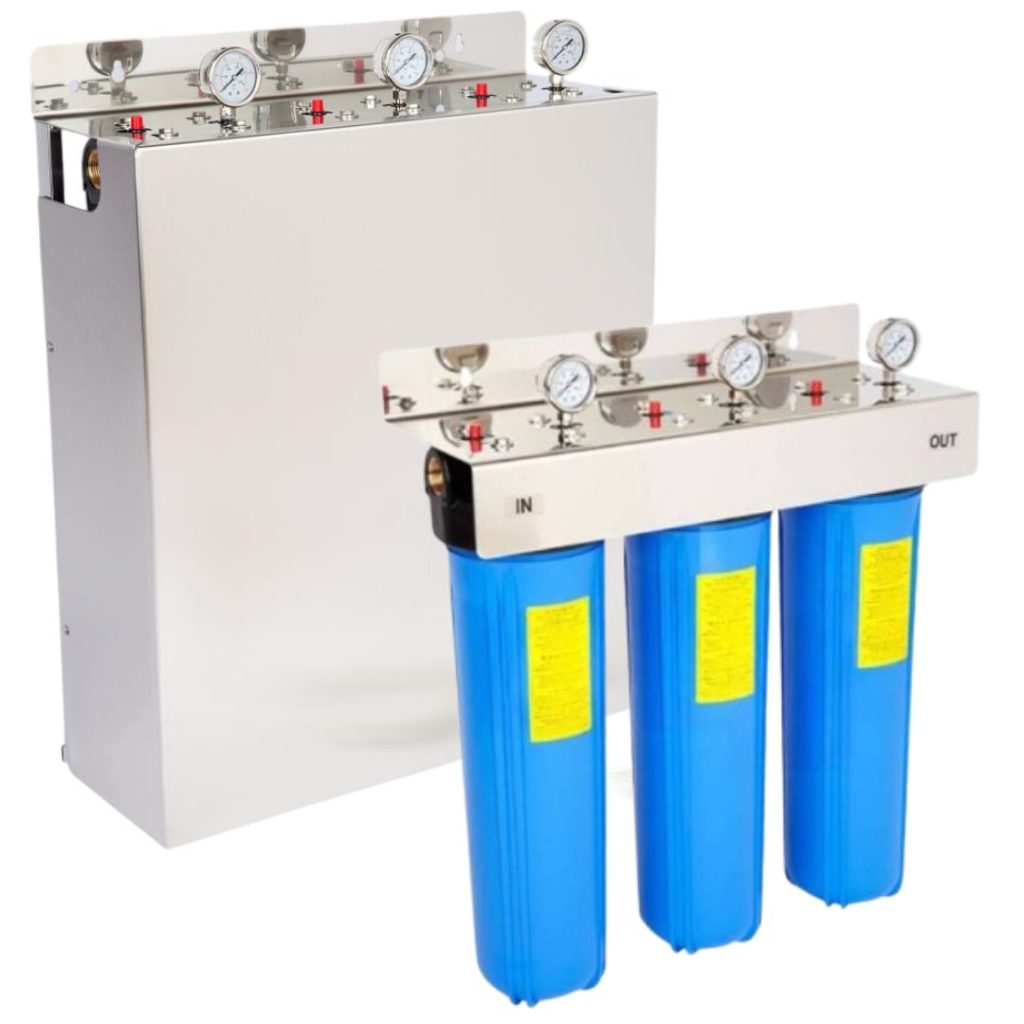
Taking Control of Your Water Safety
Water safety shouldn’t be a guessing game. After the PFAS scandal in Australia, more families are realising that trusting the system isn’t enough. Whether you opt for a reverse osmosis system under your sink or a whole house filter, the key is choosing a solution tailored to your water’s specific risks.
As a parent, I won’t compromise on clean water and neither should you. If you’re feeling lost, start with a water test or read the water analysis from your water service provider, then invest in a properly certified filtration system. It’s one of the best ways to protect your family’s health today and for years to come.
Stay informed and don’t hesitate to reach out if you need guidance. I’ve been where you are, and I’m happy to help.
Janka from Living Whole, Water Filtration Specialist & Concerned Parent
P.S. If you’re researching the best water filter for PFAS, check out our range certified reverse osmosis systems. They’re what I use in my own home. 💧

